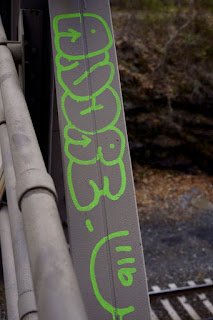I'm giving my brain a brief break from all that cogitation. It's been keeping me up at night and distracting me from looking deep into some of my photos, and understanding which ones I really like and which I will pass on for now.
I watched a video that was a lecture at Stanford University. The lecturer, Dr. Alan Weinstein is a professor of Physics at CalTech and is a part of the LIGO team. The talk was on gravity, gravity waves and implications of Einstein's theory of gravity. During the Q&A Professor Weinstein was asked a question he deferred answering by telling the questioner that he is an experimentalist. I liked that answer because it told me something about him, about some of the World Science Festival panels I've watched and about some other physicists I know.
I recently spoke with a software engineer friend who has his PhD in physics from an Ivy League university. I'd heard Prof. Steven Weinberg say, "you're either a theorist or an experimentalist. At least in the kind physics I'm interested in, no no one is both." (from a Nobel Prize interview) of I asked my friend to tell me what he felt the difference between an experimental and theoretical physicist is. He saud Experimentalists can spend a lot of time thinking about the theoretical stuff but they want to figure out how to test it. He said he personally loved to tinker. This made me wonder whether theoretical physicists think about ways to test their ideas.
When I spoke with my cousin's husband, an experimentalist in Physics, about string theory and specifically, fuzzballs, I felt he took umbrage that I might take them as a serious solution to black holes and information loss. He pointed out that they are speculative, at the moment unprovable, and as such, not really scientific (or science). He didn't say it, but I will: just because the math is pretty and makes sense, unless you can create an experiment to test it, you have to decide if it's science or what the late Stephen Jay Gould once described as, "hot stove" conversations.
Here are three quotes from the first part of Brian Greene's PBS Nova program, The Elegant Universe (2003):
JOSEPH LYKKEN (FermiLab): String theory and string theorists do have a real
problem. How do you actually test string theory? If you can't test it in
the way that we test normal theories, it's not science, it's
philosophy, and that's a real problem.
S. JAMES GATES, JR. (University of Maryland, ret.) : If string theory fails to provide a testable prediction, then nobody should believe it.
SHELDON LEE GLASHOW (Boston University and Harvard University) : Is that a theory of physics, or a philosophy?
It's 2021 and there are conjectures for proving string theory, but nothing firm. So as of this date, it seems to still be an open question.
The first two of these photos are of something that no longer exists. They were what was in the frames for ad posters in the 47th Street Passage, Grand Central Terminal North. I noticed they'd been removed and replaced with nothing. That's the third photo. Perhaps, as a sign of life returning, some new ad will soon show up there.
And then, the escalator. I love escalators and I love the word. It's a thing, but when it's a conflict it becomes a verb. We don't say a person escalates when they ride one, but a conflict can. I think I'm deescalating when I ride down.
Permalink:
https://kayester.blogspot.com/2021/05/wednesday-taking-break-from-deep.html




















































